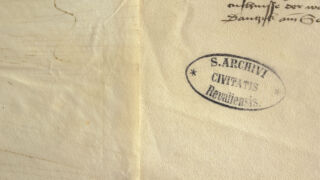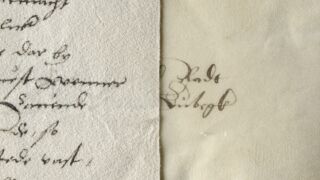A 2.9. Variations in colour or surface appearance: matte, semi-matte, glossy
A 2.1. Holes
A 2.2. Hair remains
A 2.3. Striations
A 2.4. Traces of jagged action
A 2.5. Veining, vein evidence, drainage of blood vessels
A 2.6. Variation in thickness
A 2.7. Opacity, transparency
A 2.8. Splitting
A 2.9. Variation in colour or surface appearance, matte, semi-matte, glossy
A 2.10. Presence of grain layer
General features of the surface that characterise the external appearance. The terms non-uniform colour, matt, semi-matt or glossy surface are used in the assessment.
To obtain very transparent parchment, more of the underside of the dermis was ground off, leaving the top layer of the dermis with the finer collagen fibres, thereby resulting in parchment with a stronger, smoother and glossier surface. This technology was more widespread in Southern Europe. If more of the top layer of the dermis was ground off, and the softer area of the subcutaneous side with a coarser fibrous structure remained, a short velvety parchment with less transparency was produced. This process was characteristic of Northern Europe. The colour of the animal’s coat that was used, and how the skin was processed determine the colour and surface of the parchment. Documenting changes in the glossy and matte surfaces and colours using photo reproduction can be a technically difficult task. It often turns out to be too subjective. This is especially true if the recto and verso sides are very different or the surface has a strong chalk finish.


